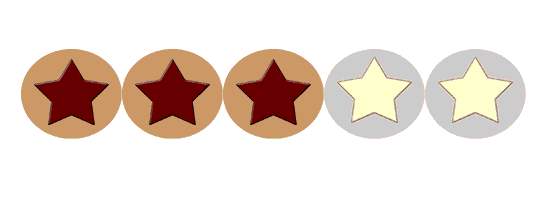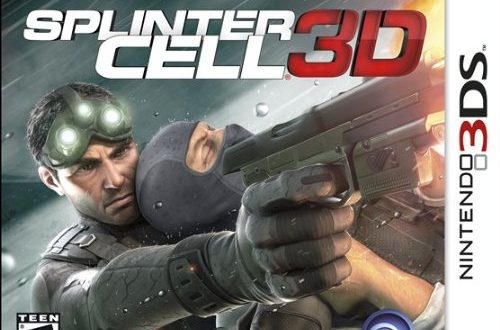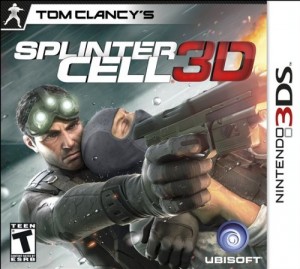
Splinter Cell 3D is a redesign of Splinter Cell: Chaos Theory. Chaos Theory was the third game in the Splinter Cell series and the last to be primarily for the previous generation of consoles. The original trilogy was known for its high graphic and audio fidelity, especially on the original Xbox. Why this iteration was chosen to be ported to the 3DS is unclear, though it seems likely because the segmented mission structure fits the handheld experience better than other games in the series might.
As in all Splinter Cell games you play as Sam Fisher, an elite operative for Third Echelon, a US counter-terrorism department. Fisher specializes in stealth missions. This game takes place in 2007, where it appears WWIII may break out in Asia. Japan has created a defense force which makes North Korea and China suspicious. The US is caught in the middle. Later, a rogue North Korean missile downs a US battleship. Fisher has to find out whether the missile launch was intentional by North Korea or part of a terrorist plot, while trying to not escalate the situation any further. There are also some convoluted ties to computer programmer and shady financial dealings. This sets up the game’s covert missions.
The game is a stealth game in third person shooter view. You want to keep Fisher in the shadows as much as possible and not attract any attention. In some missions you can also not kill anyone. So you hide in the shadows, shoot out lights, disable cameras, sneak around guards, knock them out, and hide bodies. If Fisher is seen by a camera or a guard, or a body is found in the open, an alarm is tripped. The more alarms set off the more heavily armored the enemies are.
Fisher has an array of weapons, ammo, and explosives but the game’s controls are not made for shootouts. Simply moving Fisher around takes some getting used to. You walk with the slide pad and control your look with the face buttons. It is not intuitive, but after some time the controls are comfortable for stealth movement. However, they remain too complicated for combat even after getting used to the layout. While you move with the slide pad you have to constantly change your view with the face buttons. Double-tapping X resets the camera but it is never in an ideal place. For the game’s combat to be effective the 3DS needs a second slide pad or the game needs a fixed camera perspective.
The developers make up for the clumsy controls by having the enemies be slightly stupider than in other games. Guards will react slowly to seeing Fisher right in front of them and do not always flank effectively. They also cannot open doors most of the time. Combat still ends up a negative because of terrible hit detection. It always takes two to three shots to down an opponent no matter where you shoot him. Three shots in a bulletproof vest, three shots in the head, or three shots in the foot are all the same. The only shooting that feels right is when you used the sniper rifle or one of the stunning attachments. Then, one hit takes the enemy down then and the controls feel dead on.
Your chances for satisfactory combat are hurt by the enemy AI. When the enemies cannot go through doors you are forced to fight multiple enemies out in the open. This negates the stealth aspect of the game.
It is a shame action is done so poorly because so much else is done right. Switching between weapons and attachments is done with the touchpad. The bottom screen also gives you quick access to the map, your objectives, and your gadgets. The touchpad menu is well organized and you can easily switch from your weapon to your map or something else.
In fact the entire presentation is top-notch. This is the best realistic 3D game environment on the 3DS or DS. The game environments take place mainly in the dark with little color variation, but character models and places are as realistic as I have seen on a handheld. Turning on and off a light showcases the believable lighting effects. The cut scenes look borderline HD and certainly look as if they are pushing the 3DS to its limits.
The 3D effect is one of the best I have seen on the 3DS. The effect pops the text right in front of your face and gives it a clear separation from the background. In levels the stereoscopic 3D gives depth to the 3D game world. It looks and feels great. The 3D does not muddy the colors or details like in some other 3DS titles. The best compliment I can give is that the 3D effect feels natural and seamless.
The sound too is head-and-shoulders above other 3DS titles. The main characters are voiced by professional actors and there is a lot of dialogue for them to deliver. Characters talk not only in cut scenes between missions, but also during missions. Good guys jabber information in Sam’s earpiece, baddies converse with each other, and Sam can interrogate many of the villains. All of it is on a professional acting level.
The overall sound design is impressive as well. The level of detail rivals that of a movie. Background noises include nighttime insects, footsteps, and machine noises. Playing the game with headphones on is as immersive as a surround sound game. The music is fitting and spare. It is not noticeable until a tense situation where it amps up appropriately. This is the richest sound experience on the 3DS.
Splinter Cell 3DS is a great showcase of the graphic and audio capabilities of the 3DS. It is a shame the gameplay is so disappointing. This could have been the system’s killer app it is so impressive technically. Instead it is a pretty looking and sounding game that is not much fun to actually play.
Story: 3/5
Gameplay: 2/5
Graphics: 5/5
Sound: 5/5
Replay Value: 1/5
Overall: 3/5
Article first published as Nintendo 3DS Review: Tom Clancy’s Splinter Cell 3D on Blogcritics.

